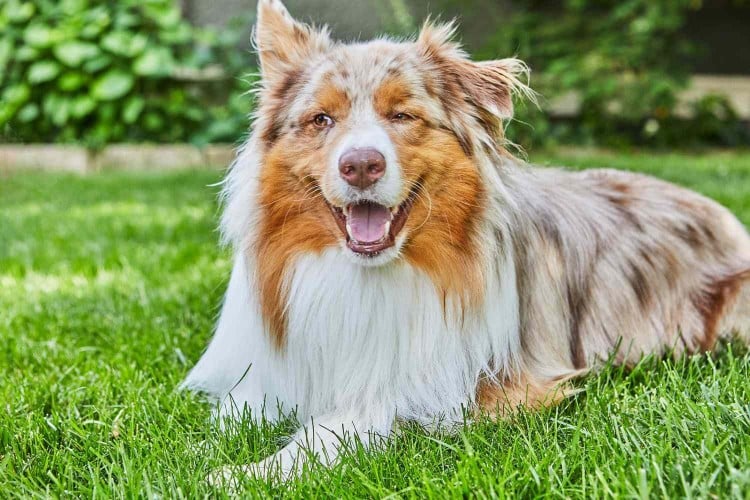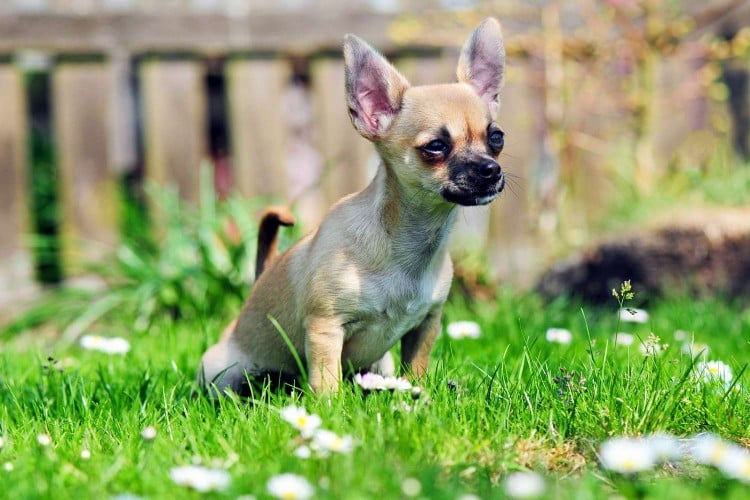Whether you just brought home that tiny, fluffy bundle of puppy joy or you recently found your perfect canine match at the local shelter, every dog-owner relationship involves a great deal of time and effort dedicated to teaching important life lessons and skills. Our dogs are not born with the ability to comprehend human words and they certainly don't come equipped with the ability to walk nicely on leash.
Walking on a leash is something every dog should know how to do. Not only does it allow them to journey about with you, their favorite human, but it also keeps them safe (and protects other dogs and people, too). It doesn't matter if you live in the city or enjoy the quiet country life, your dog should always be walked on leash. Teaching them to walk by your side takes time, but with patience and positive reinforcement, you and your dog will be enjoying daily walks together soon.
7 Steps to Teaching Your Dog to Enjoy Walking on Leash
1. Teach a Marker
A marker (or bridging stimulus) is a sound or hand signal that pinpoints the exact moment your dog did something that earned them a reinforcer (a treat). A clicker is a great example of a marker (and a conditioned reinforcer). If you don't have a clicker you can use a consistent word like "yes" or "good," or a hand signal like a thumbs up. But pick one and stick to it. Mark the behavior the second you see it. The more accurate and quick your mark is, the more effective your teaching becomes.
2. Build a Positive Association
Before he goes off on an outdoor adventure with you, your dog needs to feel comfortable and enjoy wearing walking equipment. This includes his collar, leash, and possibly a body harness. Be sure you are in a quiet, non-distracting area of your home like your living room. Start by giving your dog time to get used to wearing each item. Put his collar on while he plays in the house or goes outside to potty and each time you put it on, mark and reinforce by giving your dog a treat. Attach the leash to the collar for short moments throughout the day, being sure to mark and treat him as he moves a few steps while wearing it. If you plan to use a body harness, introduce it slowly, providing treats and praise as you place it over his head and connect the straps.
3. Teach Your Dog to Give Attention
It may seem as though you should just start walking with your dog but before you can move, you need to make sure he is actually paying attention, otherwise he may pull and dart about. Be patient and wait for your pup to offer you (this is capturing) even a tiny moment of eye contact or look at you—then immediately mark and reinforce. Repeat this frequently so that your pup understands looking at you equals treats. You can add a "cue" for attention, too. Say "look" or "eyes" right before your dog is about to look at you and then mark, reinforce, and praise.
4. Start Moving by Backing Up
This may seem counterintuitive, but the backward steps are a great way to begin moving without encouraging your dog to pull. With your dog wearing his collar and leash, take a few steps backward and as he follows you mark, reinforce, and praise. Gradually increase the number of steps backward you take. Start with two or three steps and then turn to walk forward two or three steps. Mark and reinforce him if he stays by your side.
5. Practice With "Come"
Teaching your dog to "come" while on leash is a great way to help prevent future issues or pulling or forging ahead. It also gives a good opportunity to teach your dog to come on cue without the risk of him running away. With your pup wearing his collar and leash, toss a treat just a few steps away from you. After he eats the treat and turns back around to face you, say "come" and quickly mark and reinforce the moment he moves towards you. Repeat this so it becomes a game of tossing a treat and then turning around to come to you for another one.
6. Practice Taking a Few Steps on Leash Outside
Once your dog has mastered the basics of leash training inside, you can begin to move outside, but be sure to find a place that has few distractions. Your backyard or garage are good options. Practice walking just a few steps and stopping and asking for attention. Mark and reinforce for moments of nice leash walking every few steps (while in motion) and anytime you stop, wait for their attention and then reinforce, too. Don't rush it! Baby steps, baby steps, baby steps.
7. Gradually Increase Distance
Slowly begin to move from your home to the neighborhood. Begin by walking the distance of just a house or two and gradually increase the distance as your dog masters the skill. Be sure to mark and reinforce constantly until your dog becomes better and better at this set of skills. It takes time to get good at coordinating the mark and treat delivering while moving, but after a few days of practice rest assured you will be a pro. Keep with it and stay positive!
Remember that puppies have short attention spans despite their seemingly endless amounts of energy. Don't expect a young dog to walk long distances with you until they are more mature and grown. Be patient and allow your dog to sniff, to pee on trees and bushes (doggie email), and to enjoy being outside with you. Walkies should always be fun, not a chore nor a time for perfect heeling.





